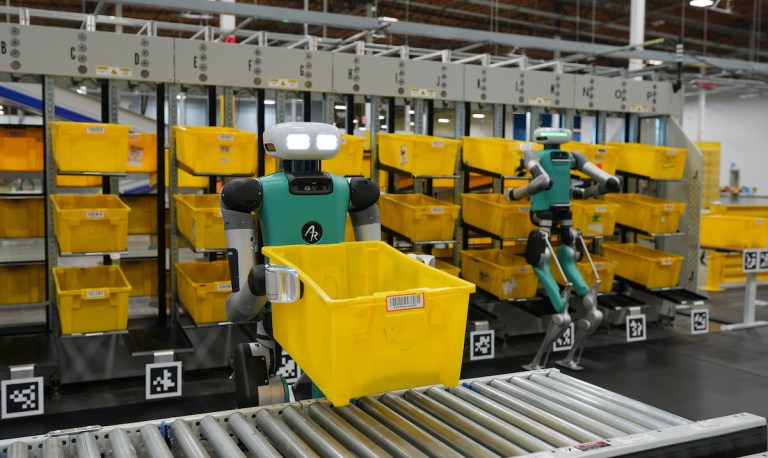
Amazon said last week that its Innovation Fund is ramping up its investment in robotics.
And as a report Monday (March 4) by Bloomberg News notes, the company already has robots working for it, with a humanoid device called Digit moving bins in one of its warehouses.
The Bloomberg report focuses on Digit’s maker, a company called Agility Robotics, saying it has “down-to-earth” ambitions at a time when other robotics startups paint their technology as making science-fiction-worthy accomplishments.
Agility, on the other hand, plans to build 10,000 robots a year and for warehouses and storerooms worldwide, with the company taking part in an investment boom that has drawn in $1.6 billion in venture capital in the last five years, the report said.
“The humanoid robot is as close to a given as I could imagine from a technology,” Adrian Stoch, chief automation officer at GXO Logistics, told Bloomberg.
His company has tested Digit at one of its warehouses, and Stoch praised the robot’s potential flexibility, envisioning bots unloading trucks during the night shift so boxes are ready for human employees on the day shift, while the machines take on other duties.
The report came the same day that Agility announced the hiring of a new CEO, Microsoft and Qualcomm veteran Peggy Johnson.
“In a field cluttered with ‘demo-ware’ and hype, Agility stands apart for having resolutely, steadily, and remarkably made a human-centric robot that actually works — and in demanding customer environments,” Johnson said in a news release covering her appointment.
Meanwhile, PYMNTS wrote last week about the way advances in artificial intelligence (AI) are leading to robots with better features and more effective human interaction capabilities.
For example, Figure AI has reportedly raised $675 million to develop AI-powered humanoid robots, a project backed by investors like Jeff Bezos’ Explore Investments, as well as technology firms such as Microsoft, Amazon, Nvidia, OpenAI and Intel.
“AI can better enable robots to better understand their environments, allowing them to better detect objects and people they come across,” Sarah Sebo, an assistant professor of computer science at the University of Chicago, where she directs the Human-Robot Interaction (HRI) Lab, told PYMNTS in an interview.
“AI can allow robots to generate language to more fluidly communicate with people and respond more intelligently to human speech. Finally, AI can help robots to adapt and learn to perform tasks better over time by receiving feedback, making it more likely that the robot behaves in ways that receive positive feedback and less likely to behave in ways that receive negative feedback.”